Nvidia GeForce RTX 2080 Ti Founders Edition Review: A Titan V Killer
Why you can trust Tom's Hardware
Rise of the Tomb Raider (DX12)
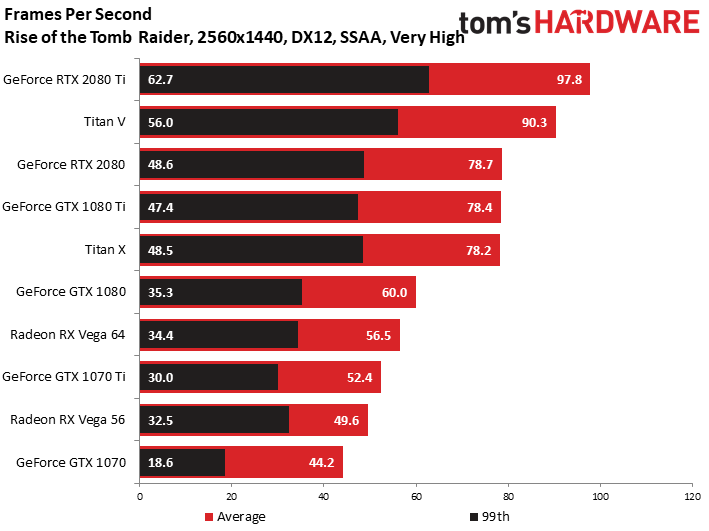
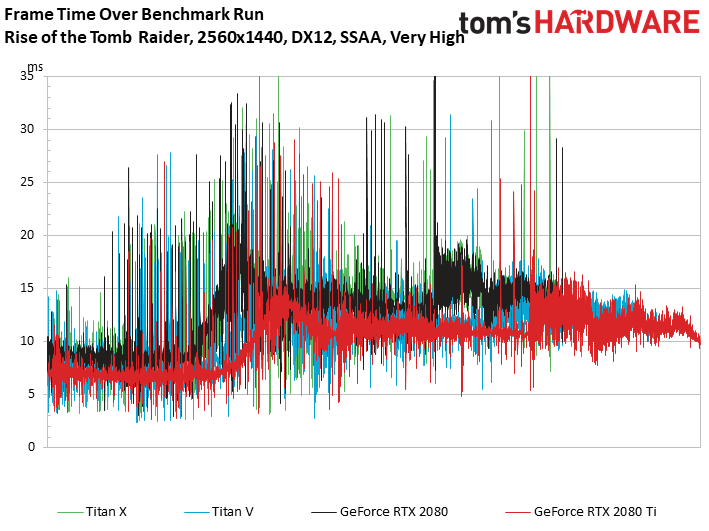
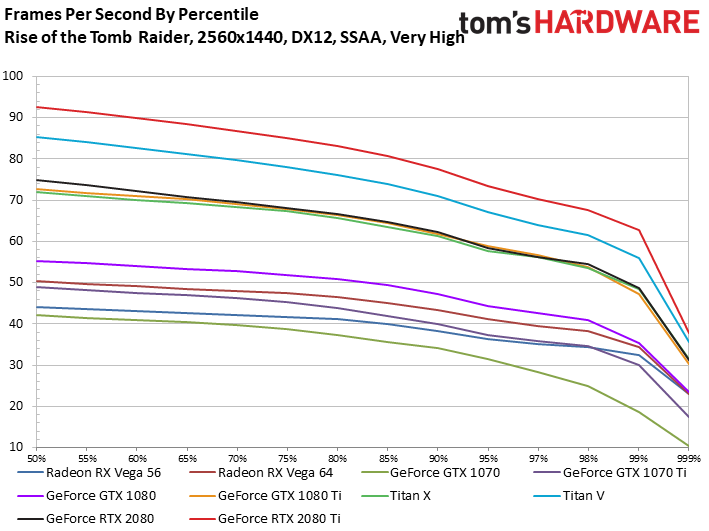
Plenty of graphics cards offer great performance in Rise of the Tomb Raider at 2560x1440, even with 2x SSAA weighing on their frame rates. But if you specifically purchased a high-refresh QHD display, only the GeForce RTX 2080 Ti approaches 100 FPS using these settings. That’s 25% more performance than what a GeForce GTX 1080 Ti offers.
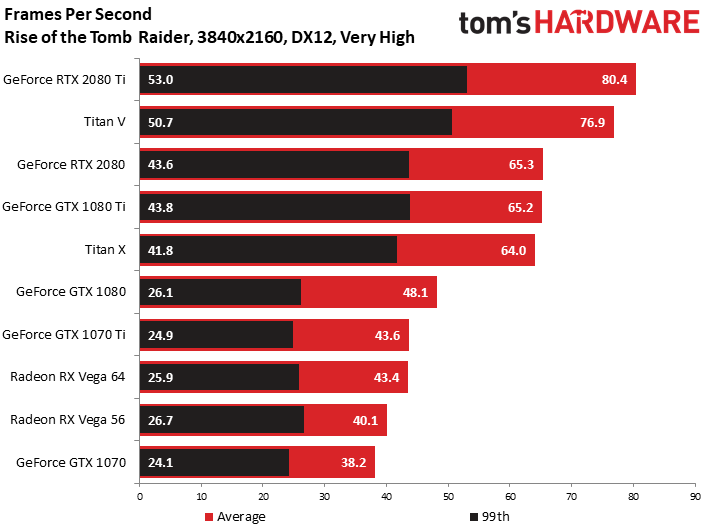
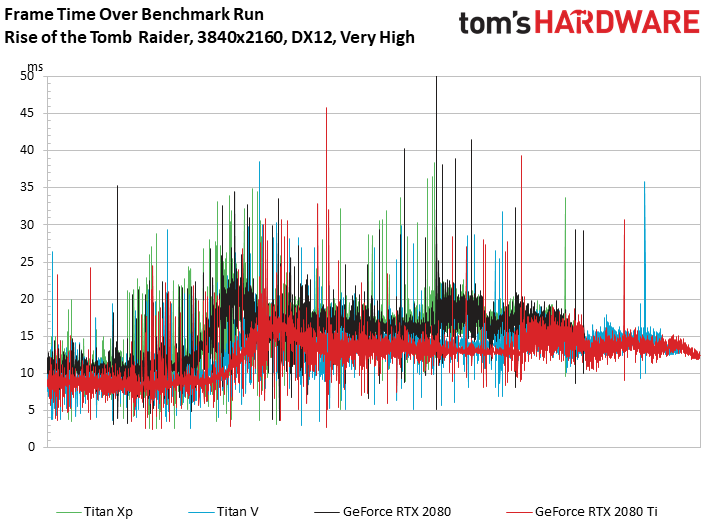
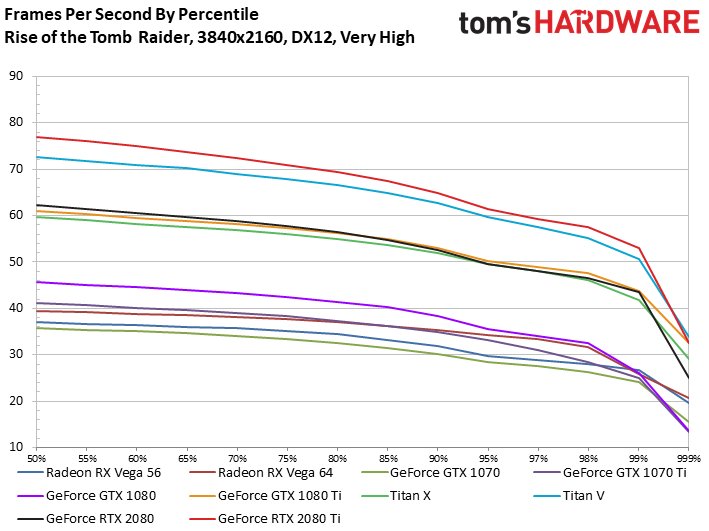
Many gamers believe that 4K precludes the need for anti-aliasing. Experiment with FXAA or SMAA in Rise of the Tomb Raider if you’d like, but we disable 2x SSAA in this test to keep the results meaningful.
Whereas GeForce GTX 1080 Ti does average more than 60 FPS, it’s much easier to appreciate the GeForce RTX 2080 Ti’s 80+ FPS result. You pay a hefty premium for that 23% advantage. In return, though, high-resolution/high-quality gameplay is truly enjoyable.
Tom Clancy’s The Division (DX12)
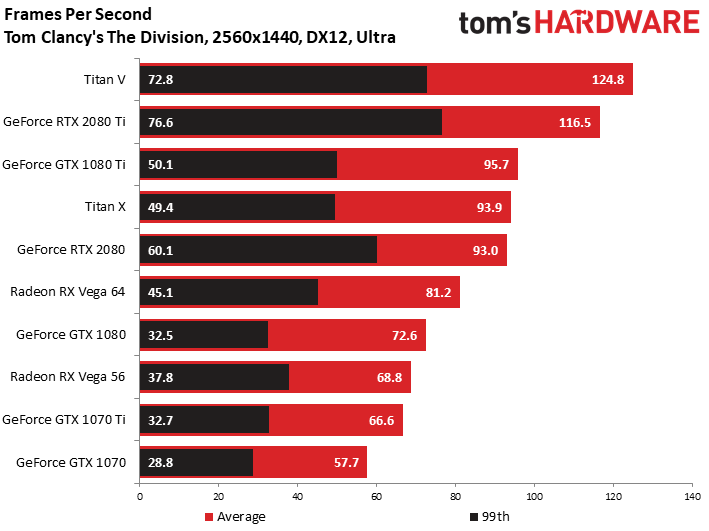
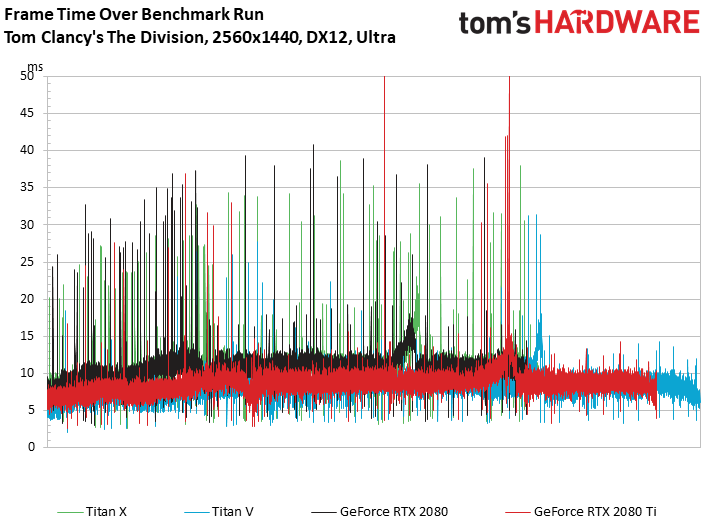
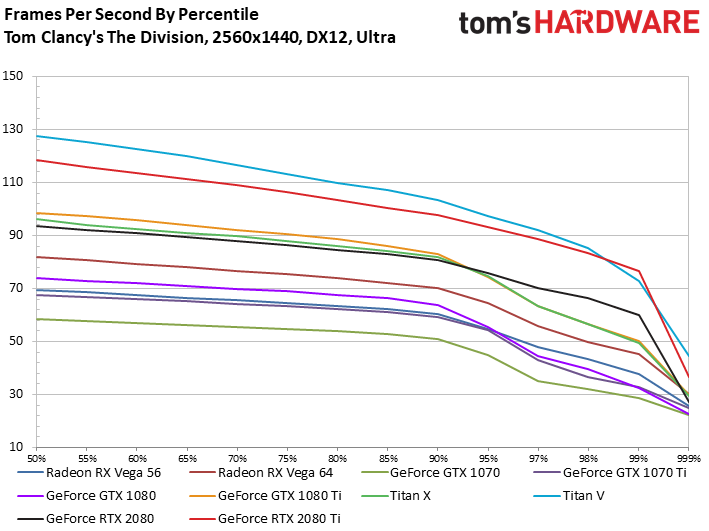
The Turing architecture relinquishes its overwhelming dominance in Tom Clancy’s The Division. Although GeForce RTX 2080 Ti beats the GeForce GTX 1080 Ti by 22%, it cannot stave off Nvidia’s Titan V. And with Radeon RX Vega 64 offering 70% of the 2080 Ti’s performance for 48% of the cost, better bargains abound for gaming at 2560x1440.
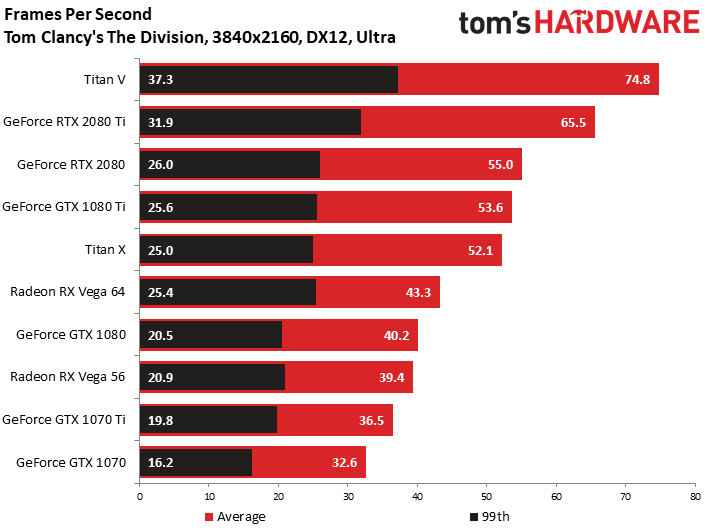
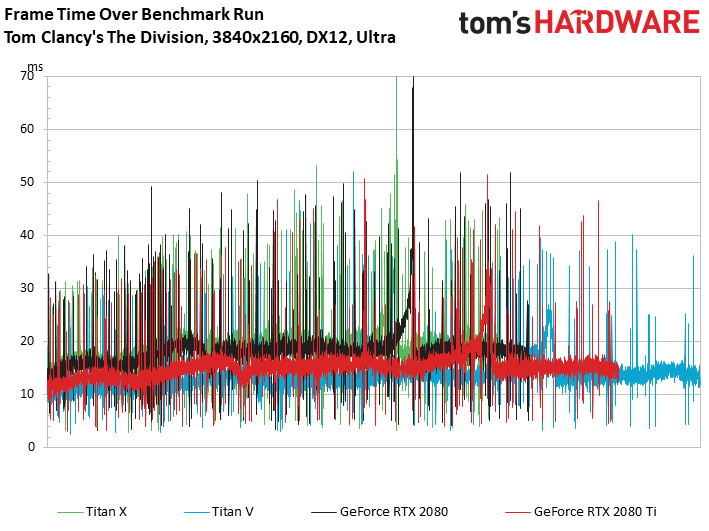
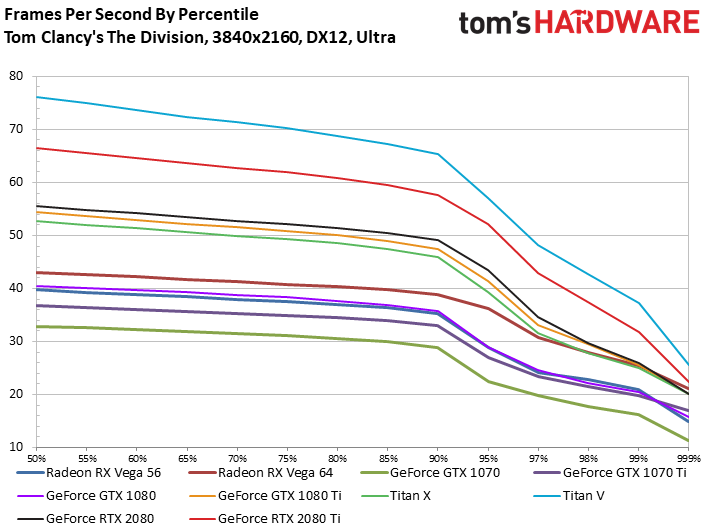
Playing The Division at 4K using the game’s Ultra preset requires a powerful graphics card indeed. We know from experience that a GeForce GTX 1080 Ti is ample if you’re willing to accept Medium quality settings. But averaging more than 60 FPS necessitates a GeForce RTX 2080 Ti or Titan V. One costs $1200; the other is still available for $3000.
A GeForce GTX 1080 Ti achieves 82% of the RTX 2080 Ti’s average frame rate. That doesn’t sound bad. Tab over to the FPS by percentile chart, though, and you’ll see it means spending about 20% of your time under 50 FPS. In contrast, GeForce RTX 2080 Ti spends about 4% of its time below 50 FPS.
MORE: Best Graphics Cards
Get Tom's Hardware's best news and in-depth reviews, straight to your inbox.
MORE: Desktop GPU Performance Hierarchy Table
MORE: All Graphics Content
Current page: Results: Rise of the Tomb Raider and Tom Clancy’s The Division
Prev Page Results: Grand Theft Auto V and Metro: Last Light Redux Next Page Results: Tom Clancy’s Ghost Recon, The Witcher 3, and WoW-
A Stoner Conclusion, let them hold onto these card until they can lower the price to about $700Reply -
pontiac1979 "Waste of time to write a review. "Just buy it"."Reply
Oh yeah, god forbid Tom's does an in-depth review of the latest and greatest. Keyword greatest. If you desire 4K gaming and have the funds available, why wouldn't you? -
ubercake I'm probably going to buy one... Though it's not my fault... I feel like the Russians are compelling me to do this by way of Facebook. I'm a victim in this whole Nvidia marketing scam. Don't judge.Reply
That being said, I like high-quality, high-speed graphics performance. This may also be influencing my decision.
Great review! -
AnimeMania How much of the performance increase is due to using GDDR6 memory? I know this makes the cards perform better the higher the resolution is, how does it effect other aspects of the video cards.Reply -
teknobug "Just buy it" they said...Reply
If you're in Canada, you might not want to pay the price of these. -
chaosmassive While I appreciate this very detailed and nicely written review, its kinda redundantReply
because I think Avram has already reviewed this card with his opinion on late august
with the conclusion was "just buy it" -
wiyosaya SMH I don't understand the reasoning for comparing a $3k known non-gaming card with a $1.2k gaming card. Are there really gamers our there ignorant enough, other than those with deep pockets who want bragging rights, to purchase the $3K card for gaming when they know it is not meant for gaming? Or is this to differentiate Tom's from the other tech sites in order to inspire confidence in Tom's readers?Reply
Personally, I would have rather seen the 2080 Ti compared against 1080 Ti even if it Tom's comes to the same conclusions as the other tech web sites.
The comparison in this article does not make me want to rush out and buy it because it is $1.8k cheaper than a non-gaming card. I really hate to say it, but with the premise of this review being somewhat along the lines of "lookie hereee kiddies. Heree's a gaming card for $1.2k that beets a $3k non-gaming card" turned this review into a TL;DR review for me.
